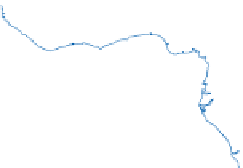Geoscience Reference
In-Depth Information
periods of isolation they experienced at that time. This
isolation led to the development of many endemic species,
each found exclusively in the area in which it speciated
It is also clear that distinct variations related mainly
to climatic and geological factors occur within these
biomes. An idealized picture of these patterns is shown in
Enhanced greenhouse impacts are not believed to
produce major impacts in the humid tropics. GCM pre-
dictions suggest an increase in both mean annual tempera-
ture and mean annual rainfall, but the change is smaller
than in temperate parts of the globe. It would seem that
natural change of the tropical forest environment in the
near future should not be large, though human-induced
changes may generate further impact on the forest.
Human impact on the forest
Although forests do provide food, it was only through
agriculture and crop production that food supplies
became sufficient to sustain a settled and concentrated
population in villages, towns and eventually cities. As
populations have expanded, so there has always been
pressure on forest reserves to increase the area of agri-
cultural land. The European deciduous forests were
decimated in the last millennium; North American forests
suffered similarly though not on such a vast scale. Even
the boreal forests of Canada, Scandinavia and Russia are
being utilized, though in this instance for paper and
timber products rather than replacing them with agricul-
ture. It is not surprising therefore that the tropical rain
forests have begun to suffer severe depredation. The scale
of damage varies. In the small, fragmented states of West
Africa each country has used its timber resources as a
source of foreign exchange without being able to preserve
large areas. For example, Ivory Coast produced 5·5 M m
3
of industrial roundwood in the late 1970s. By 2005 the
figure had fallen below 2·2 M m
3
. In the same time the
population grew from about 6 M to almost 14 M and
plantation crops increased in area under government
incentives. Privatization of the forestry industry has meant
that control of timber resources has become more
difficult. In Brazil pressure on land has, until recently, been
much less and so vast areas of rain forest remained
Upper Guinea
Central Congo
Cameroon-Gabon-Congo
Eastern
Congo
Present day rain forest
Pleistocene refuges
Source: After Maley in Alexander et al.(1996)
Fresh water
swamp forest
Mangrove
forest
Tropical
lower montane
rainforest
Tropical lowland
evergreen rainforest
Tropical
upper montane
rainforest
Peat swamp
forest
Peat
Brackish water
forest
Iron-rich soils
Heath forest
over sands
Source: Based on Collinson (1977)




































































































































































































































































































